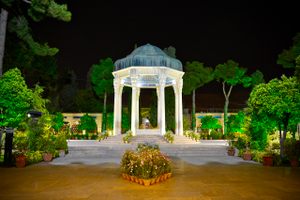About
Eram Garden (Bagh-e Eram), located along the northern shore of the Khoshk River in Shiraz, is one of the most famous and beautiful Persian gardens in all of Iran. It should be noted that the word 'Eram' is the Persian version of the Arabic word 'Iram' which means heaven in Islam's most holiest of books, the Qur'an. With its beautiful grounds, lush plant life and aesthetic attractions, it's easy to see why Eram evokes such a description.
With their beautiful flowers, refreshing air, aromatic myrtles and towering cypress trees, including one tree which is said to date back to 3000 years ago (Sarv-e naz), the Eram Gardens are a major tourist destination, especially during the spring.
Although no one is quite sure when construction of the gardens began, historical evidence suggests that the gardens were built during the Seljuk Dynasty (11th-14th centuries) under the rule of one of its most celebrated monarchs, Ahmad Sanjar. Like many other attractions in Shiraz, the Eram Gardens have been restored and repaired by the Zand kings of the Zand Dynasty (1750-1794), but during the later period of the Zand Dynasty, the garden changed hands to a Qashgai tribal chief, Mohammad Qoli Khan.
Mohammad Qoli Khan ordered the construction of the original mansion that stood on the grounds in the early 18th century, and planted various trees and plants in the garden including pine, orange, cypress and persimmon trees. Later on, during the rule of King Nasser ed-din of the Qajar Dynasty (1785-1925) Mirza Hassan Ali Khan Nasir-al Mulk bought the gardens from the Qashgai tribes and began construction on the present pavilion that now stands in the gardens.
As noteworthy as the gardens themselves, the pavilion was constructed by a local Shirazi architect, one Mohammad Hassan. The beautiful three-story structure was constructed based on the Safavid and Qajar styles of architecture, and includes tiles inscribed with poems from the famed Persian poet Hafez.
Related Tags
Published
February 6, 2012




































